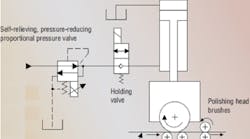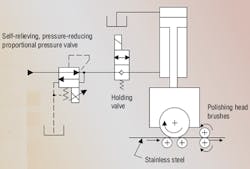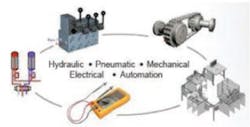Last month’s issue presented a problem at a major zoo, where a size D03 valve was ripped from its base by an elephant. The replacement valve could be shifted electrically, but not manually. Surprisingly, the solution was a simple one.
After some investigation at the zoo, Dale Schaefer, a consultant and instructor of CFC-Solar, discovered that the directional valve had been mounted 180° from the correct position. Remounting the valve solved the problem.
D03 bolt patterns are not symmetrical, and some valves have a locating pin next to the pressure port to prevent the valves from being mounted 180° from the correct position. The pattern is a rectangle with two bolts closer together on the small end of the rectangle. However, several manufacturers supply modules that can be rotated to move their function of the screw-in cartridge to a different port or to reverse the bypass check. To accomplish this, the mounting bolt holes are enlarged to accommodate the bolt hole variances, and the locating pins are omitted, removed, or shipped loose for field installation.
Because the modules have larger holes, the mounting bolts can deflect just enough to allow the directional valve to be mounted in the reversed, 180°, position. Consequently, the pressure and tank ports become reversed, with the valve’s pressure port connected to tank and its tank port connected to supply pressure.
Newer wet-pin type solenoids feature a movable armature assembly inside a core tube that a removable coil fits over. The armatures of the solenoid assembly are internally connected to the tank port. When the tank port is pressurized, both armatures have the same hydraulic pressure applied to both ends of each armature, creating a balance between them. However, the manual push pin has an area opposite the area where finger force is applied. Therefore, the higher the tank pressure, the higher the force holding and forcing the push pin out. Applying system pressure to this area makes it almost impossible to shift the armature manually. But because the armatures are hydraulically balanced, the electrical solenoids work fine.
Another concern is the pressure rating of the core tubes. Some are only rated to 1000 psi, whereas others can handle 3000 to 4500 psi. If pressurized beyond its rated maximum, the core tube can leak, expand, and even rupture, which would blow the coil assembly off the valve body.
This is not an uncommon problem; we find this condition is not discovered during startup and debugging or is often just ignored because the electrical solenoids do their job.




